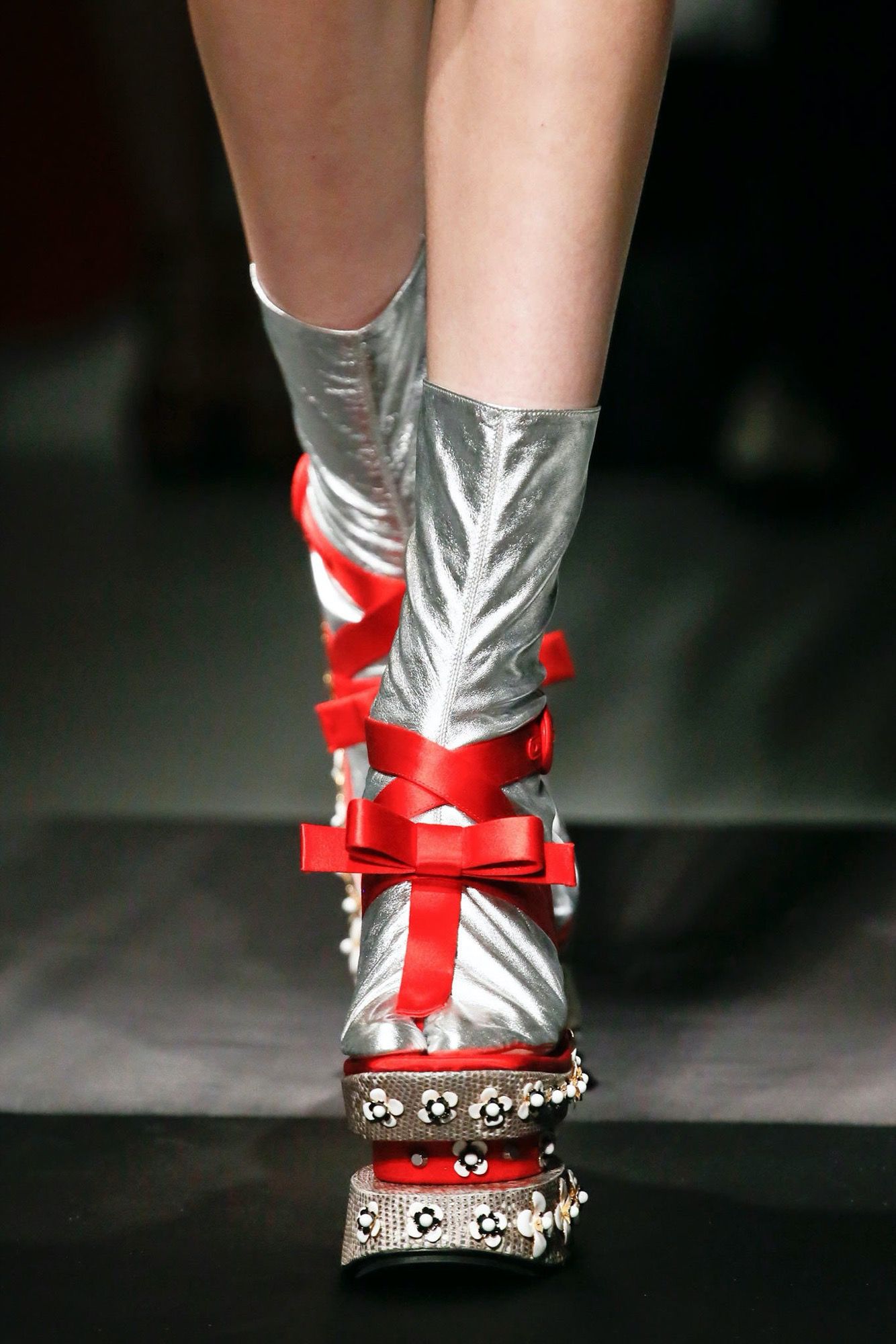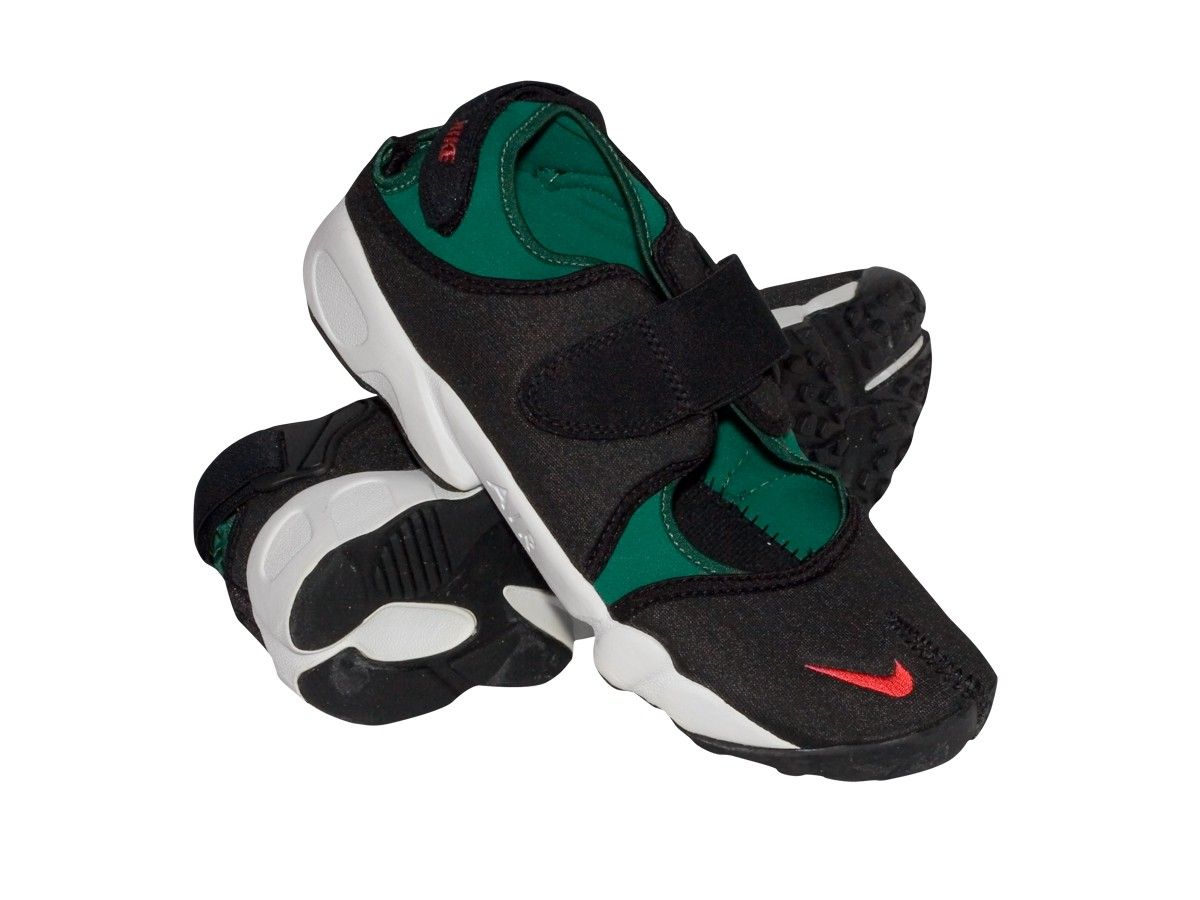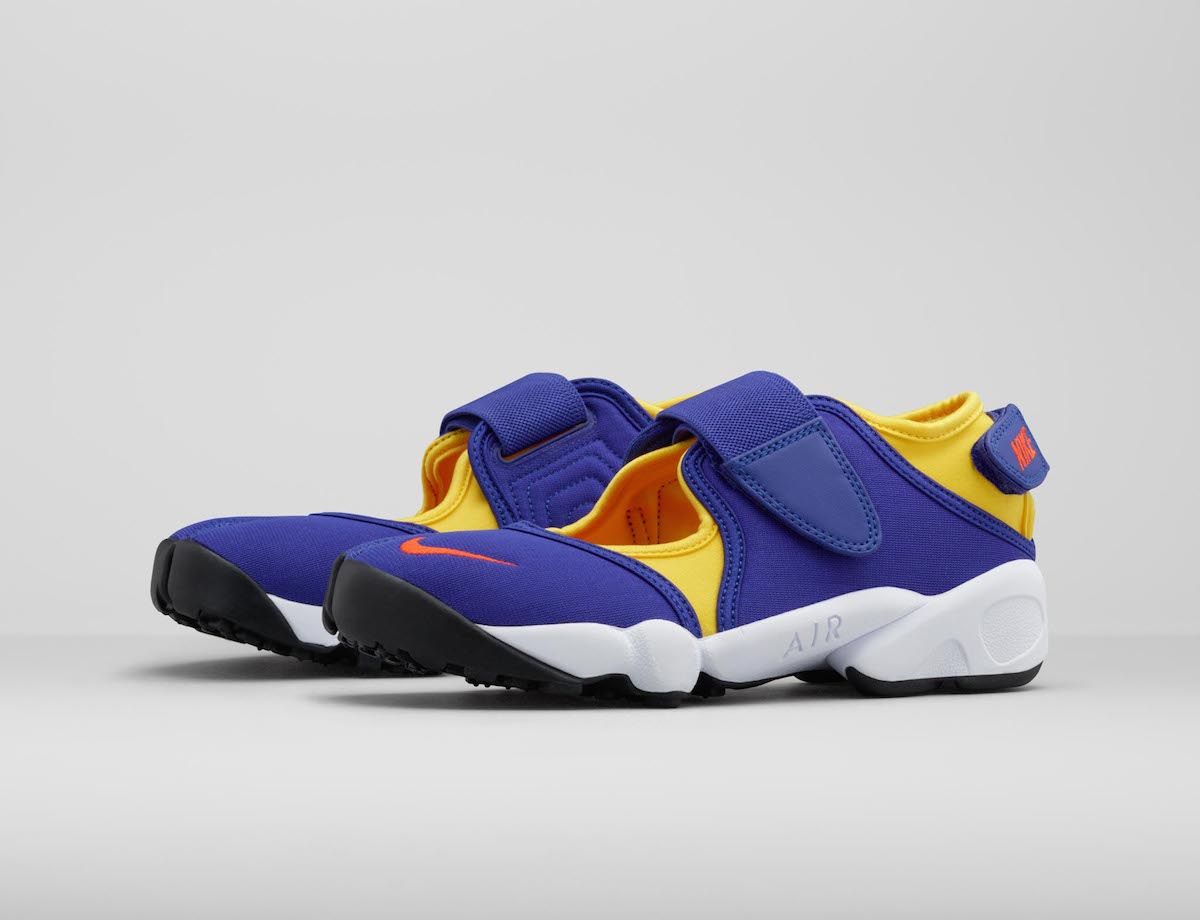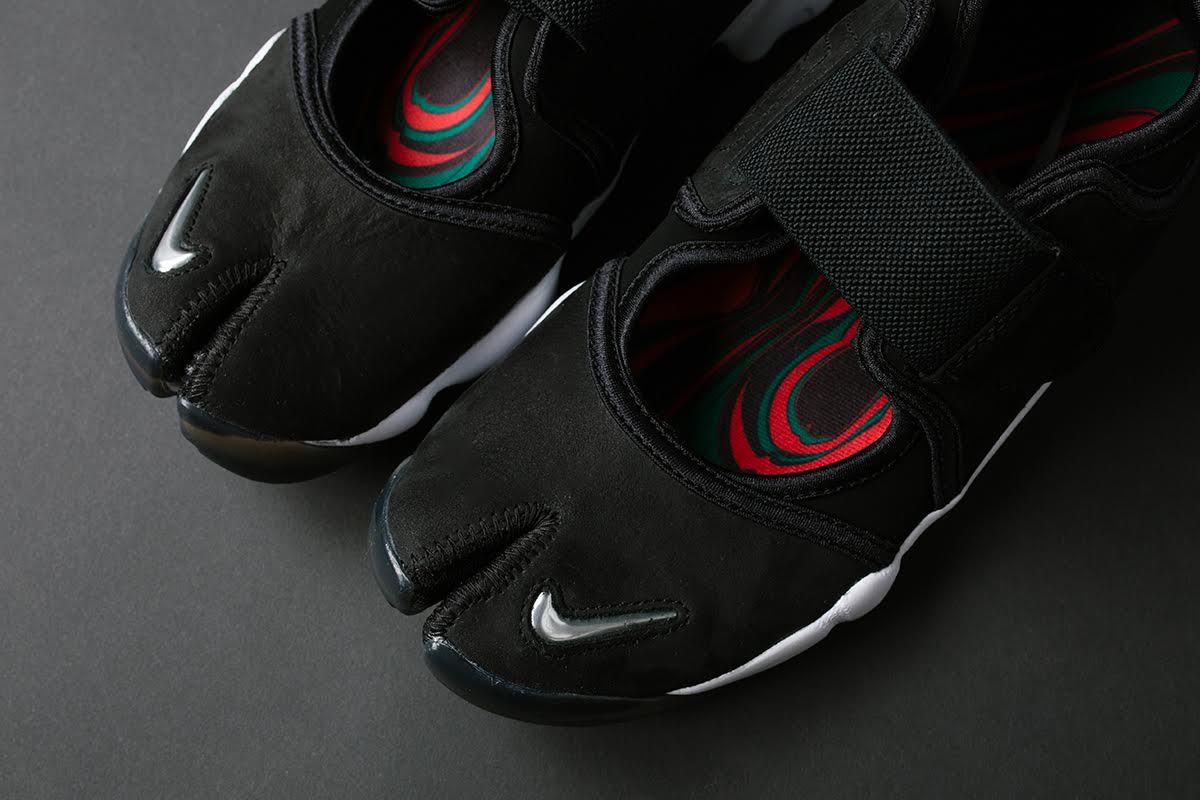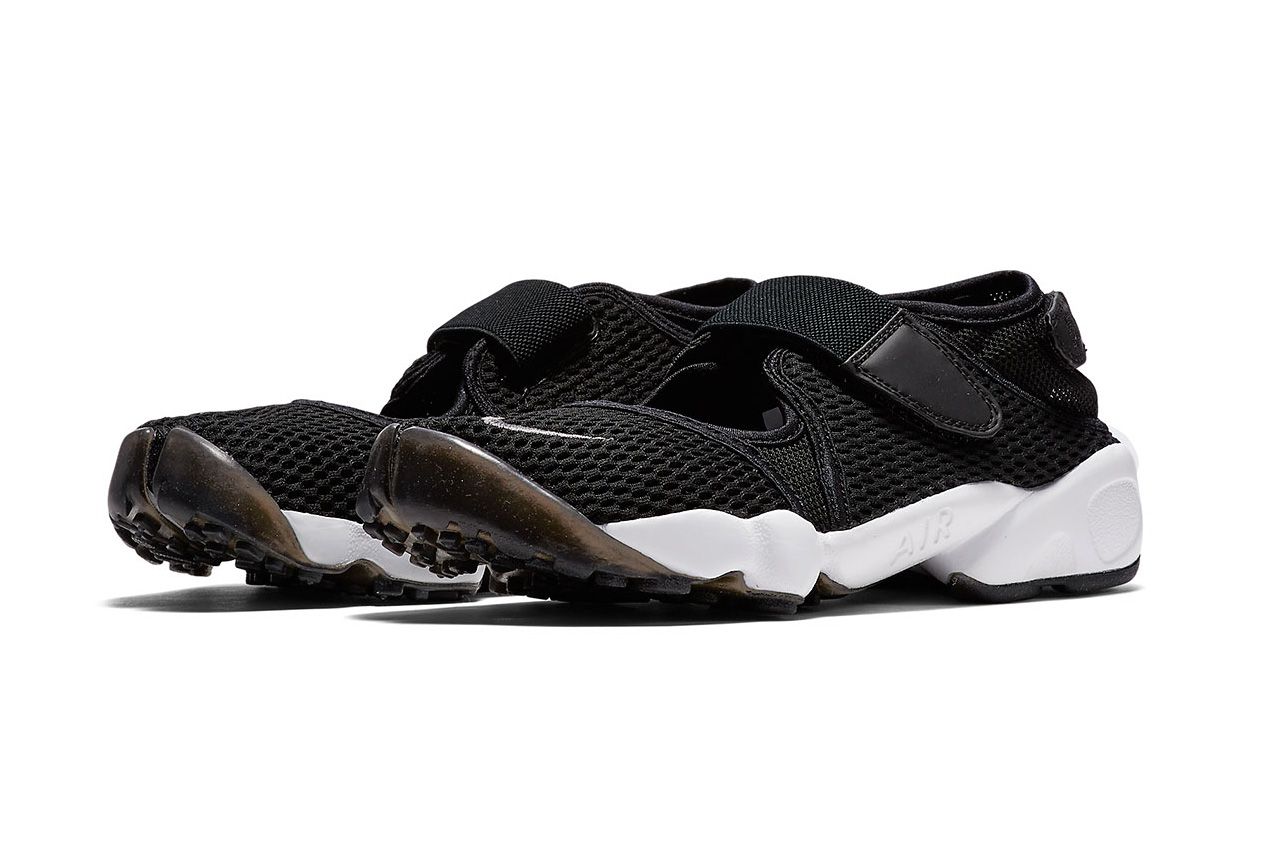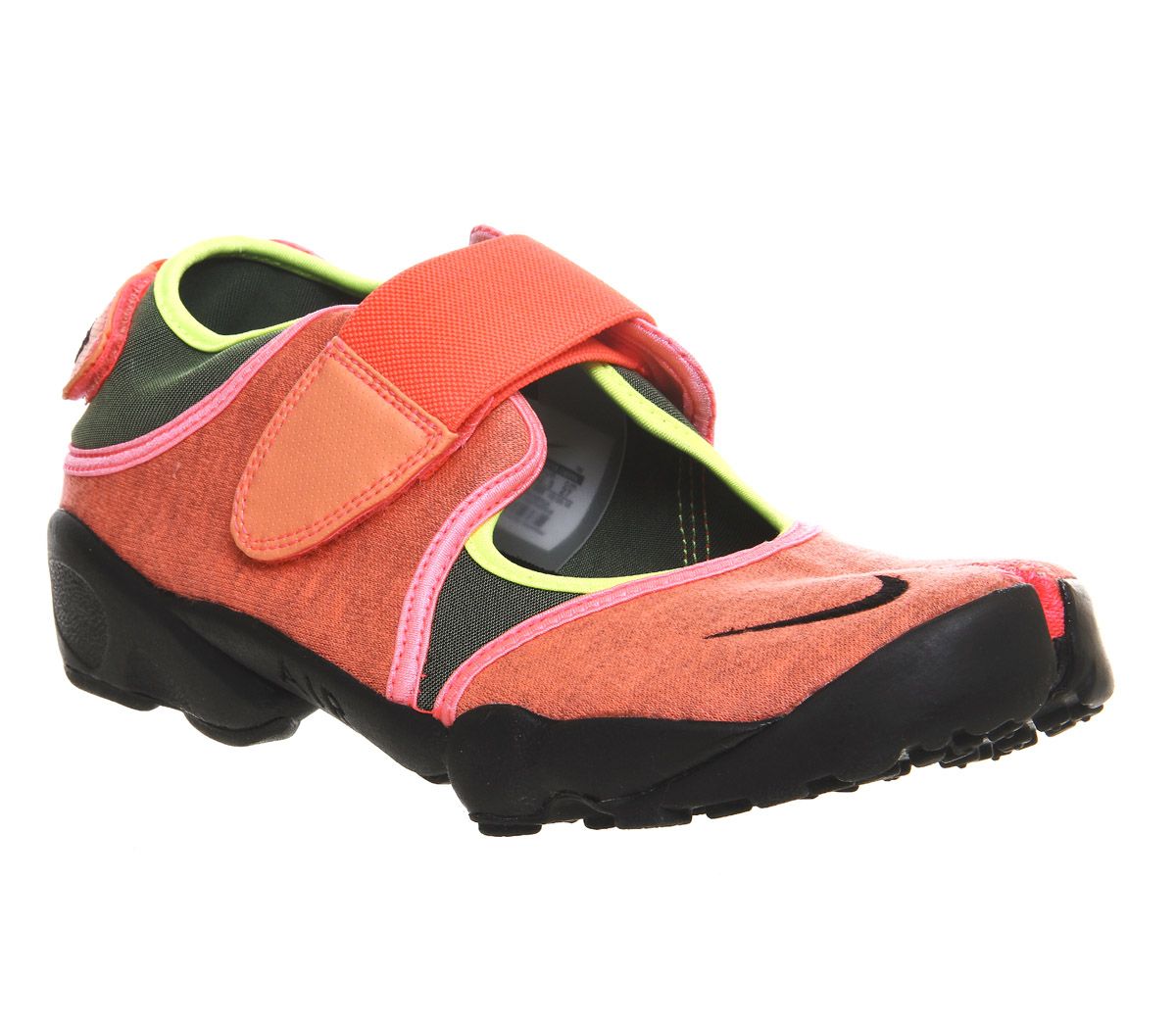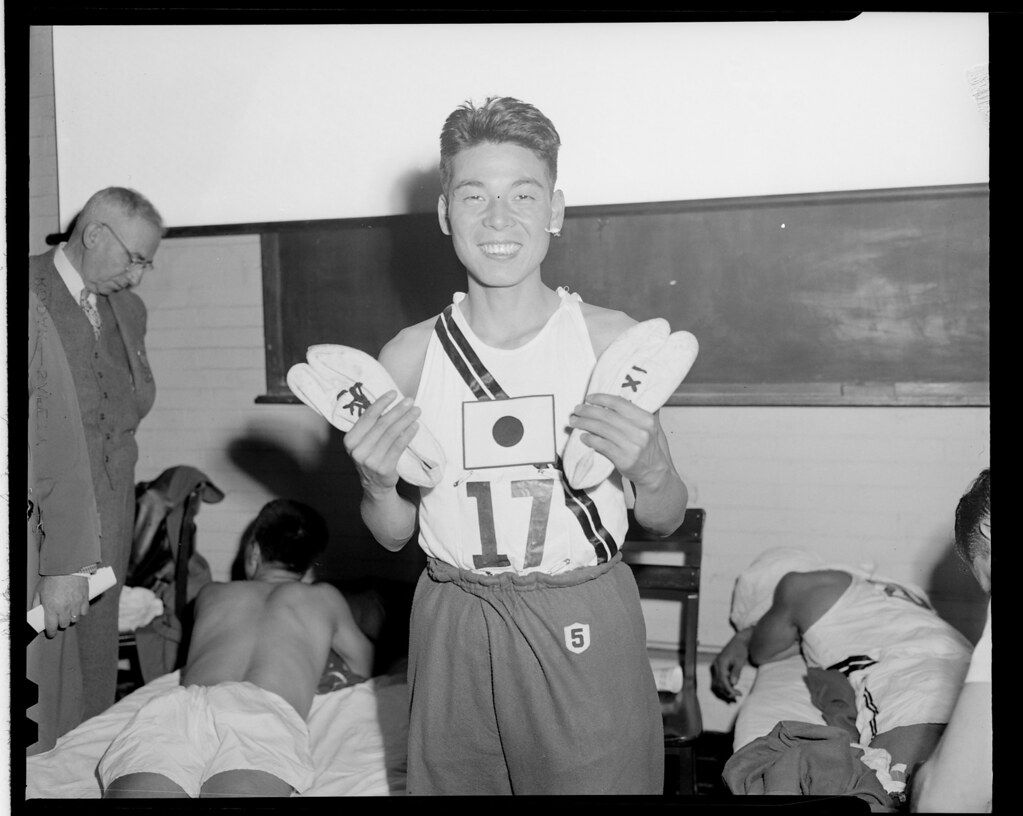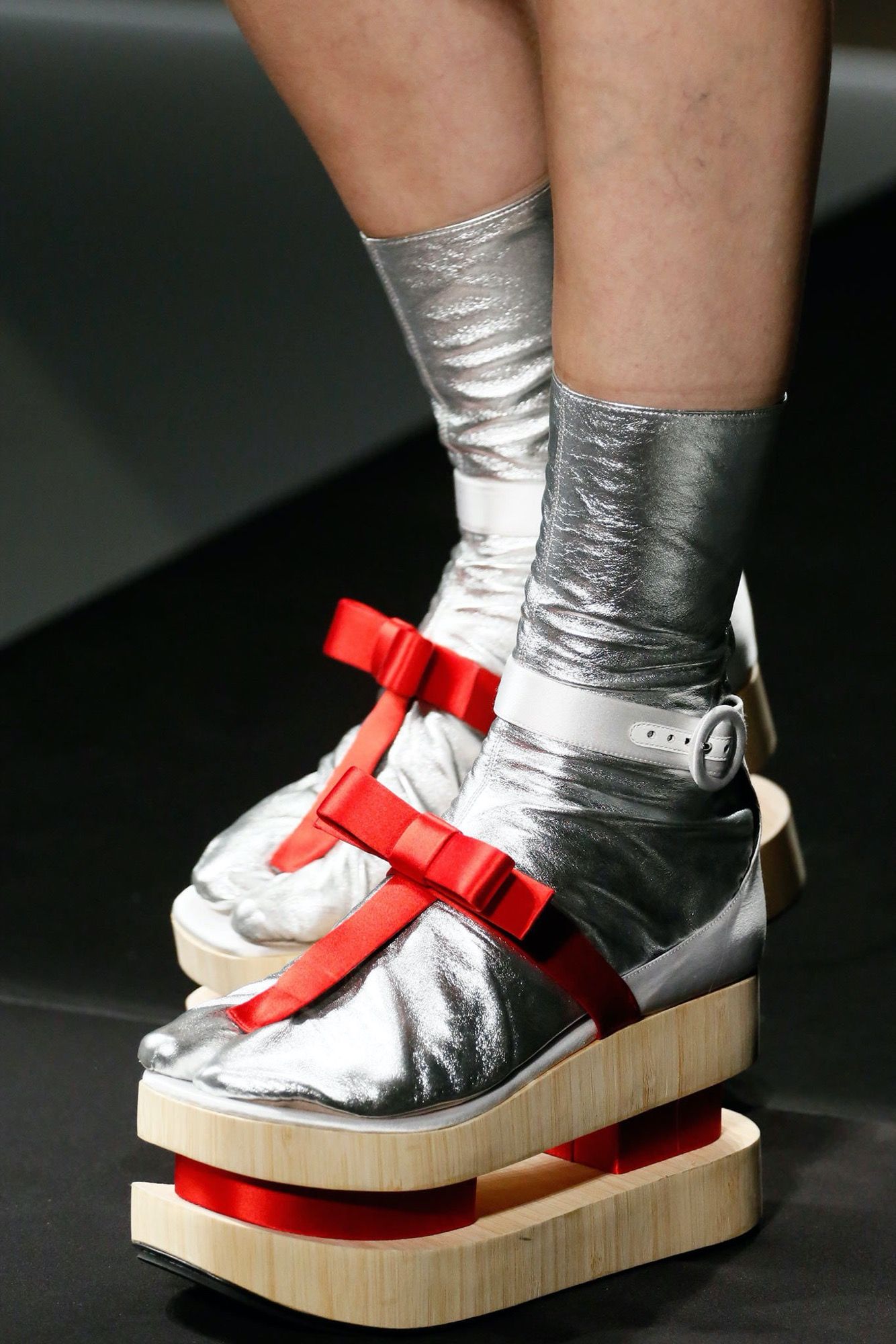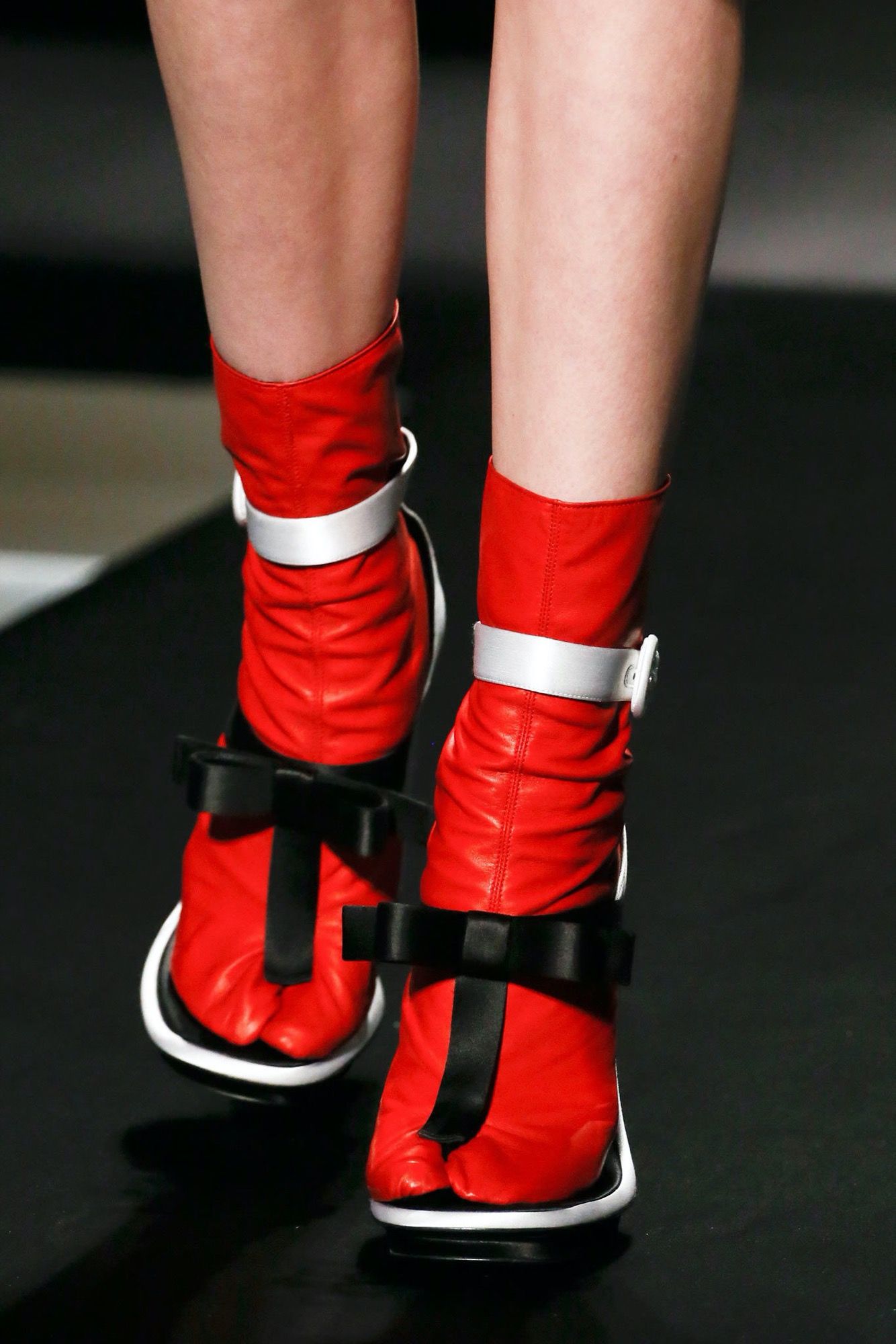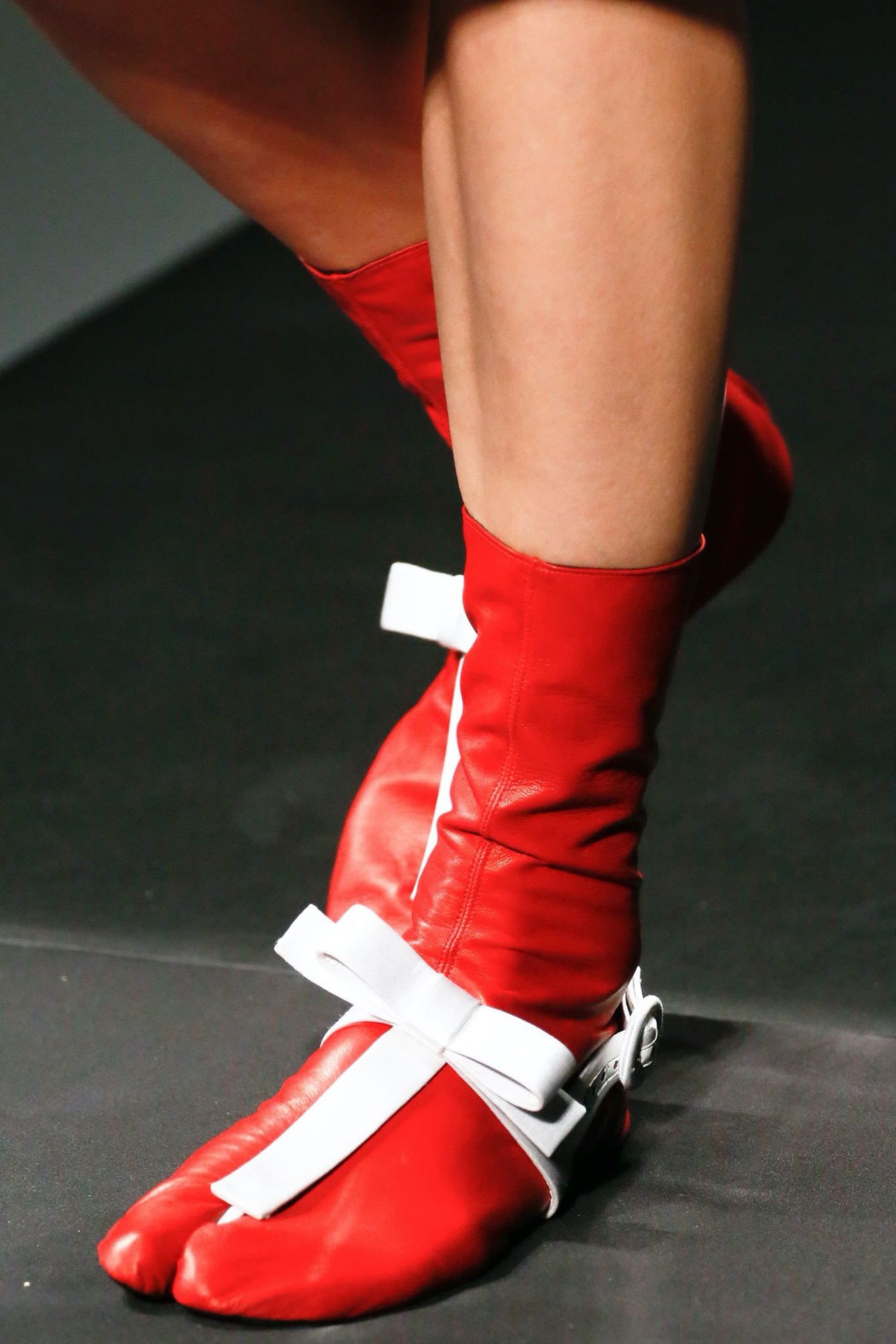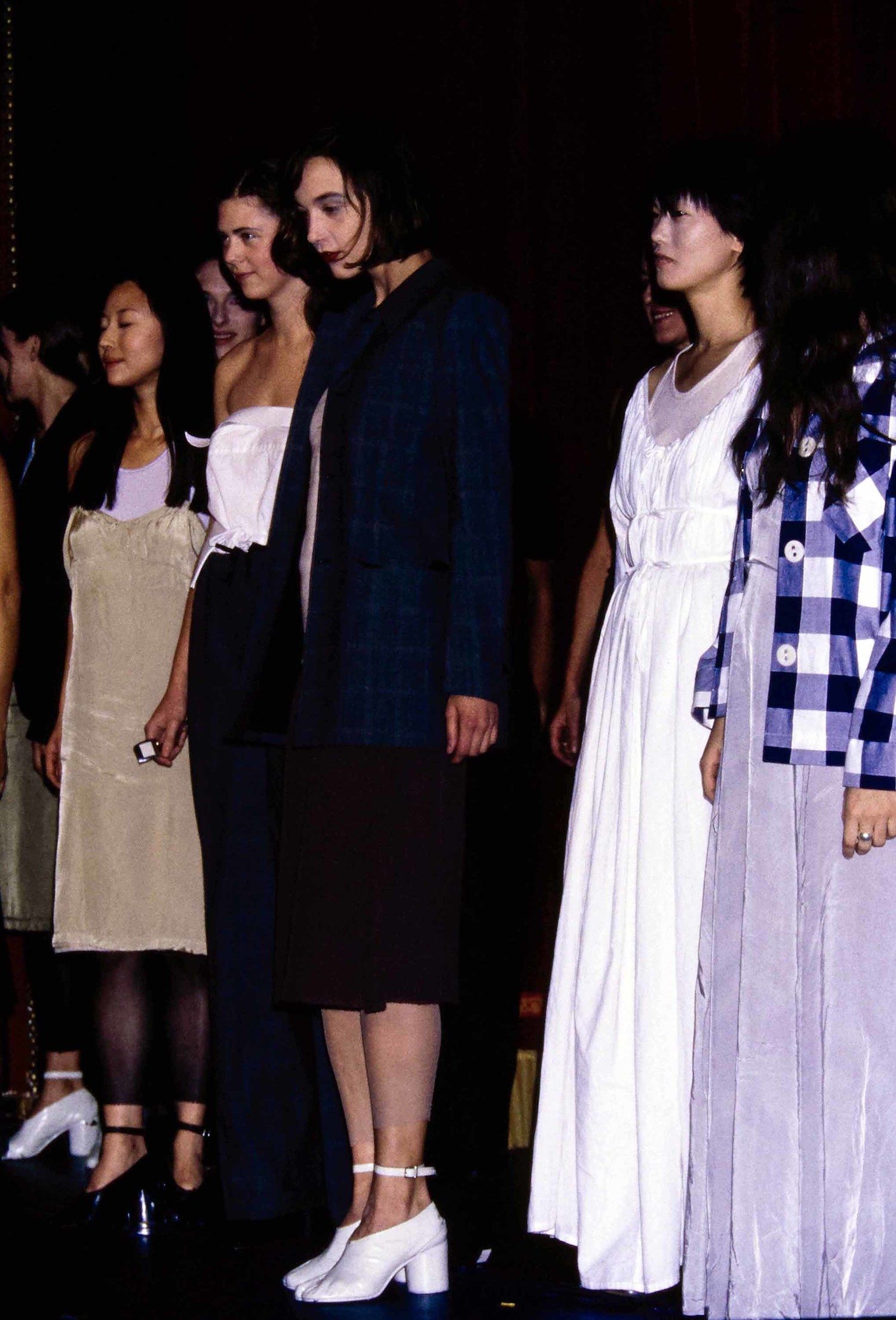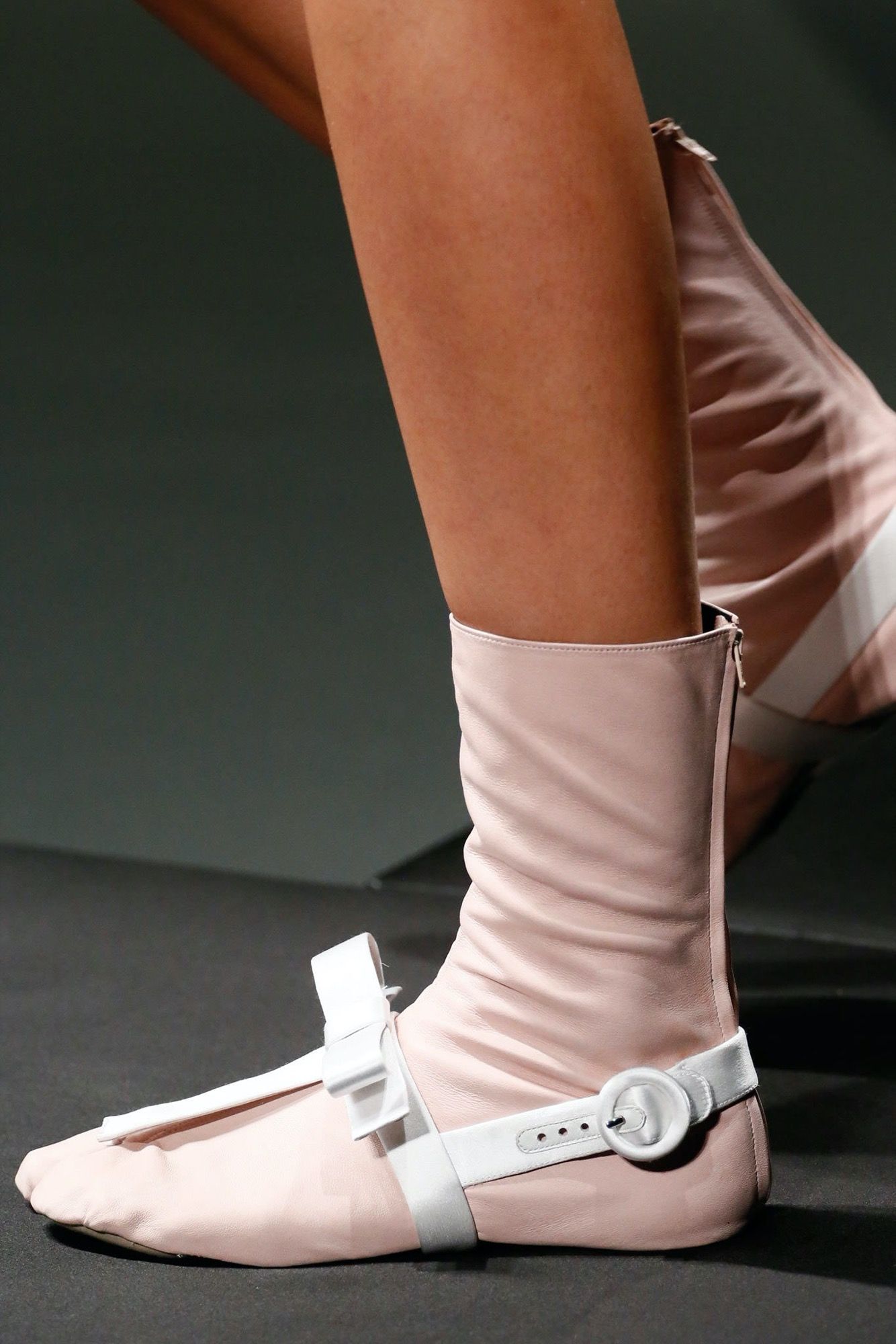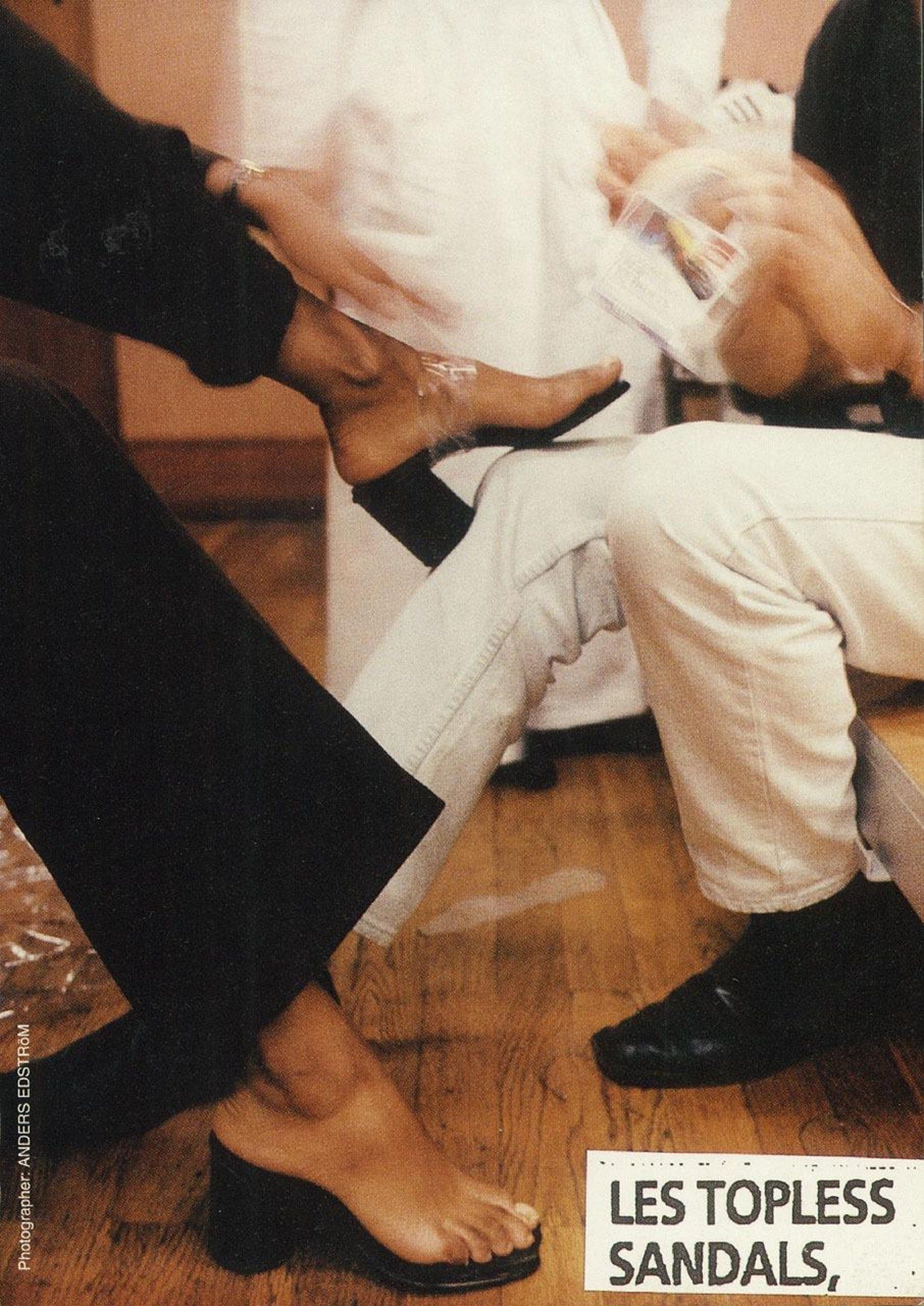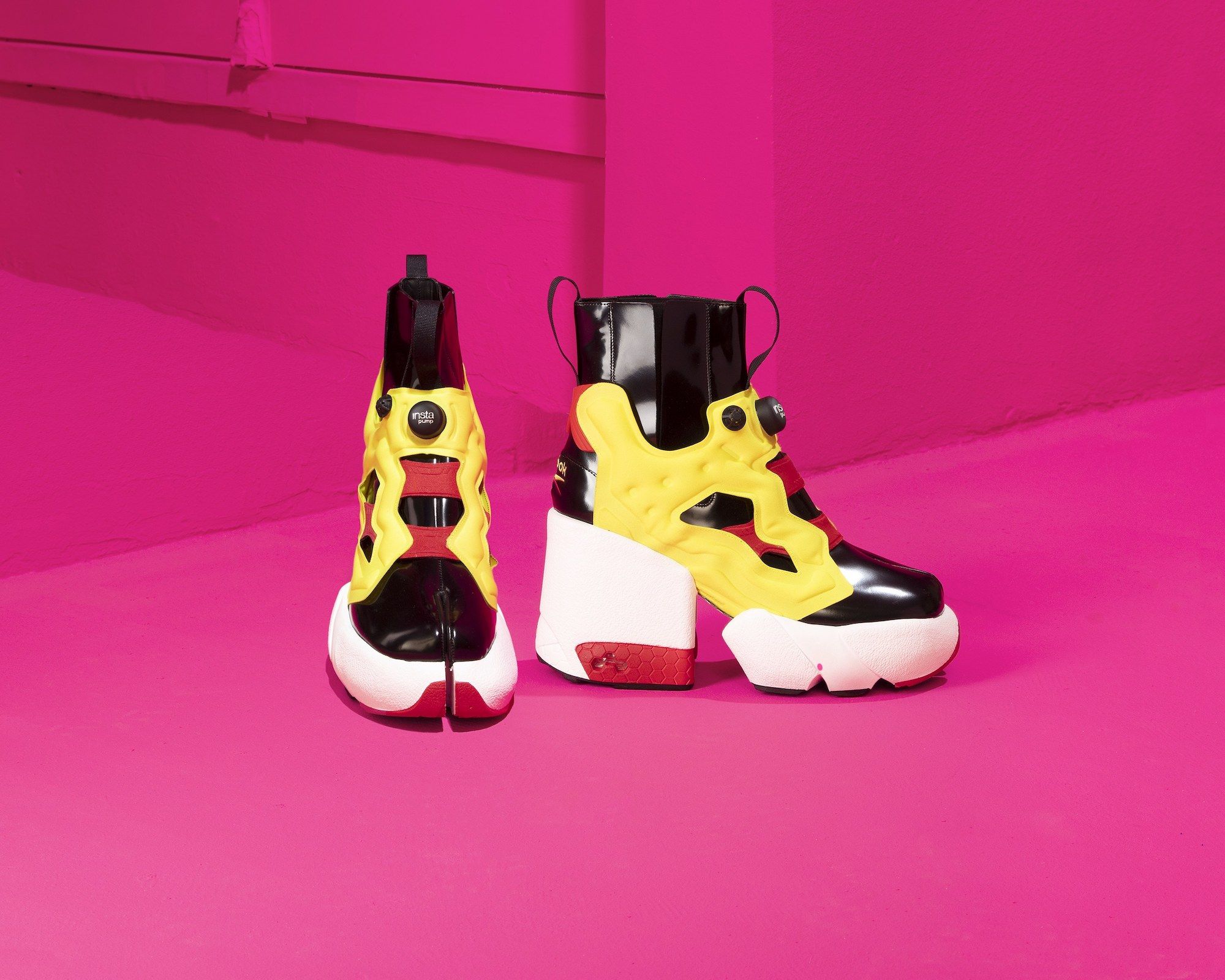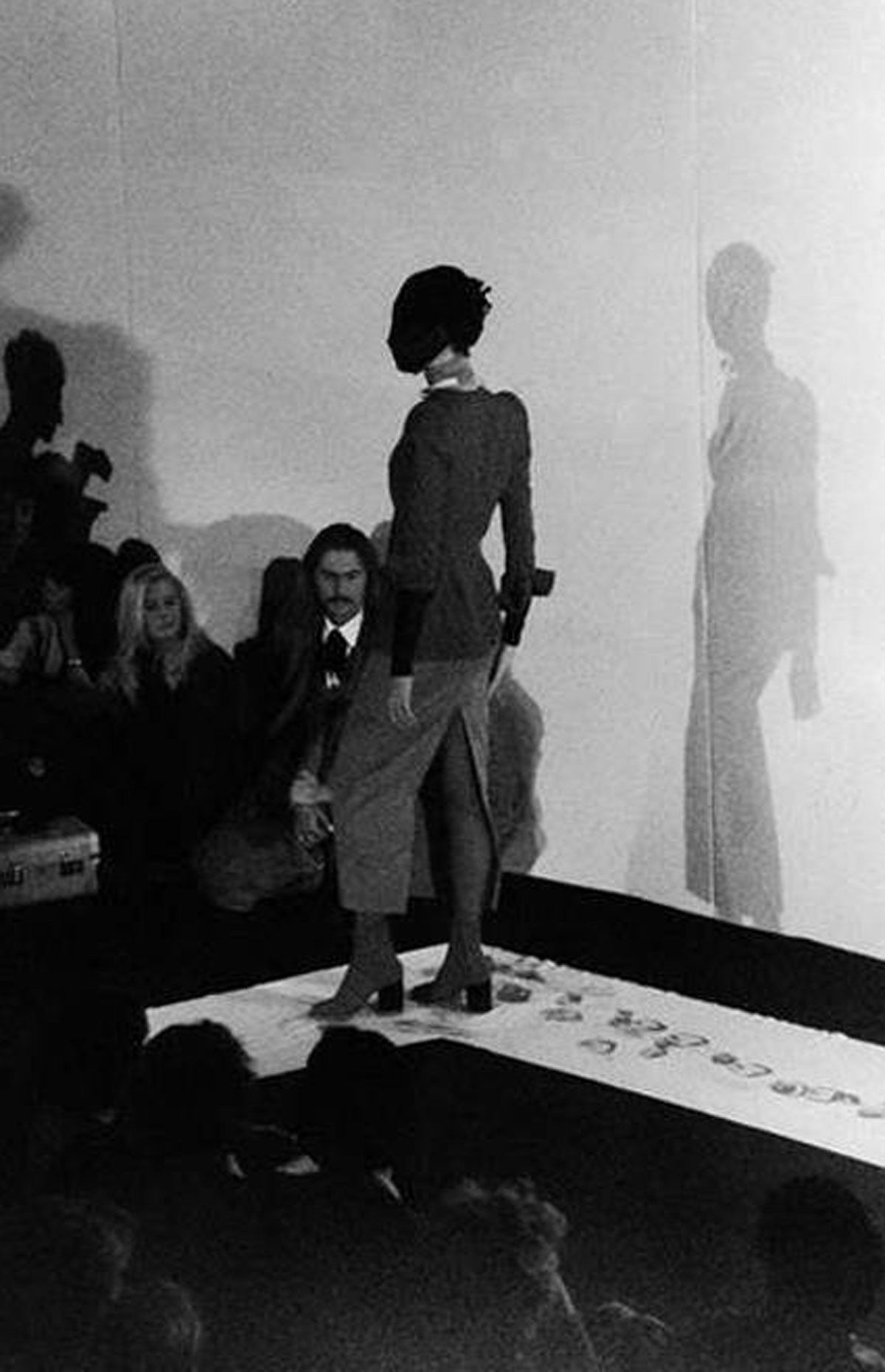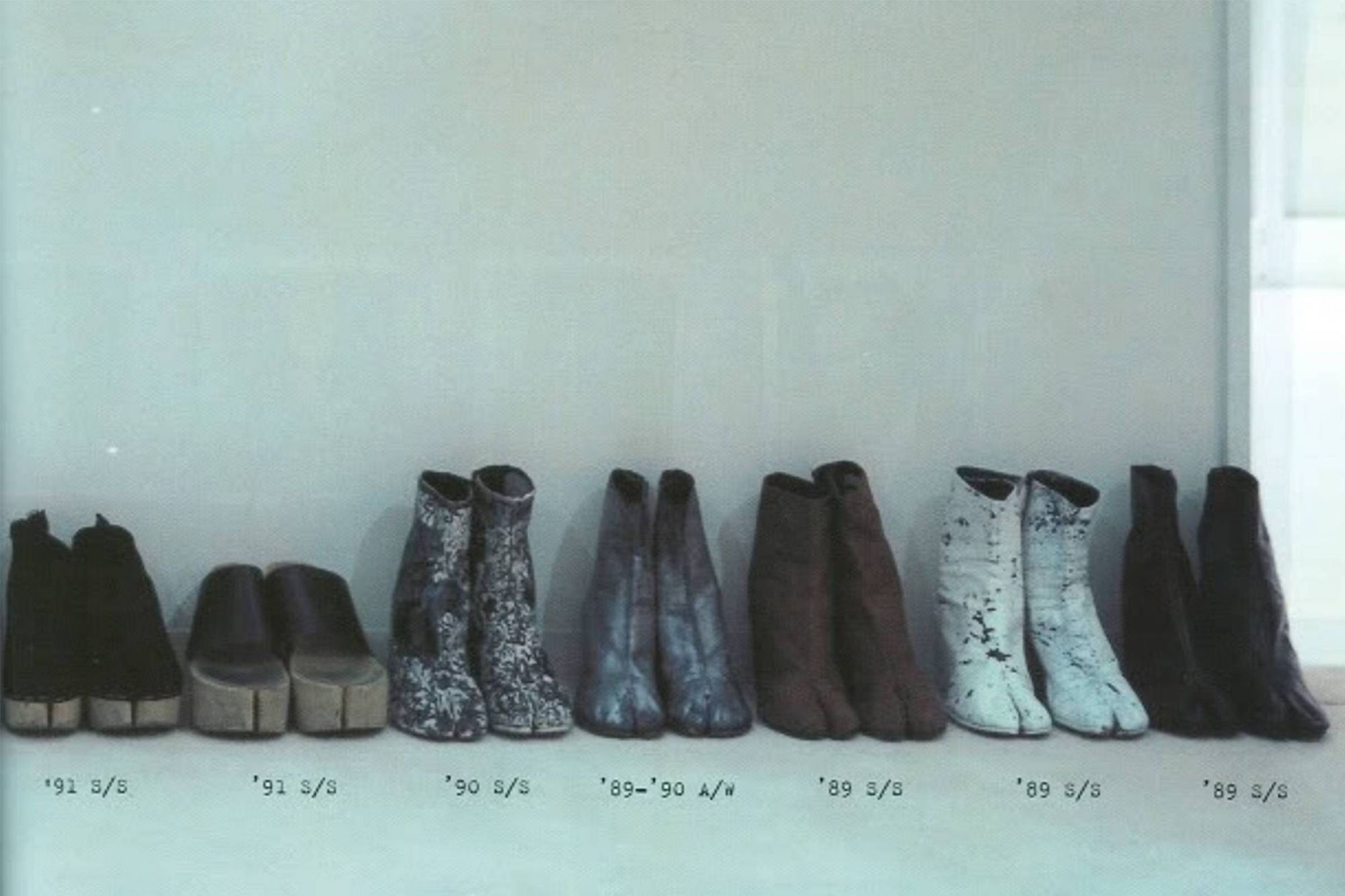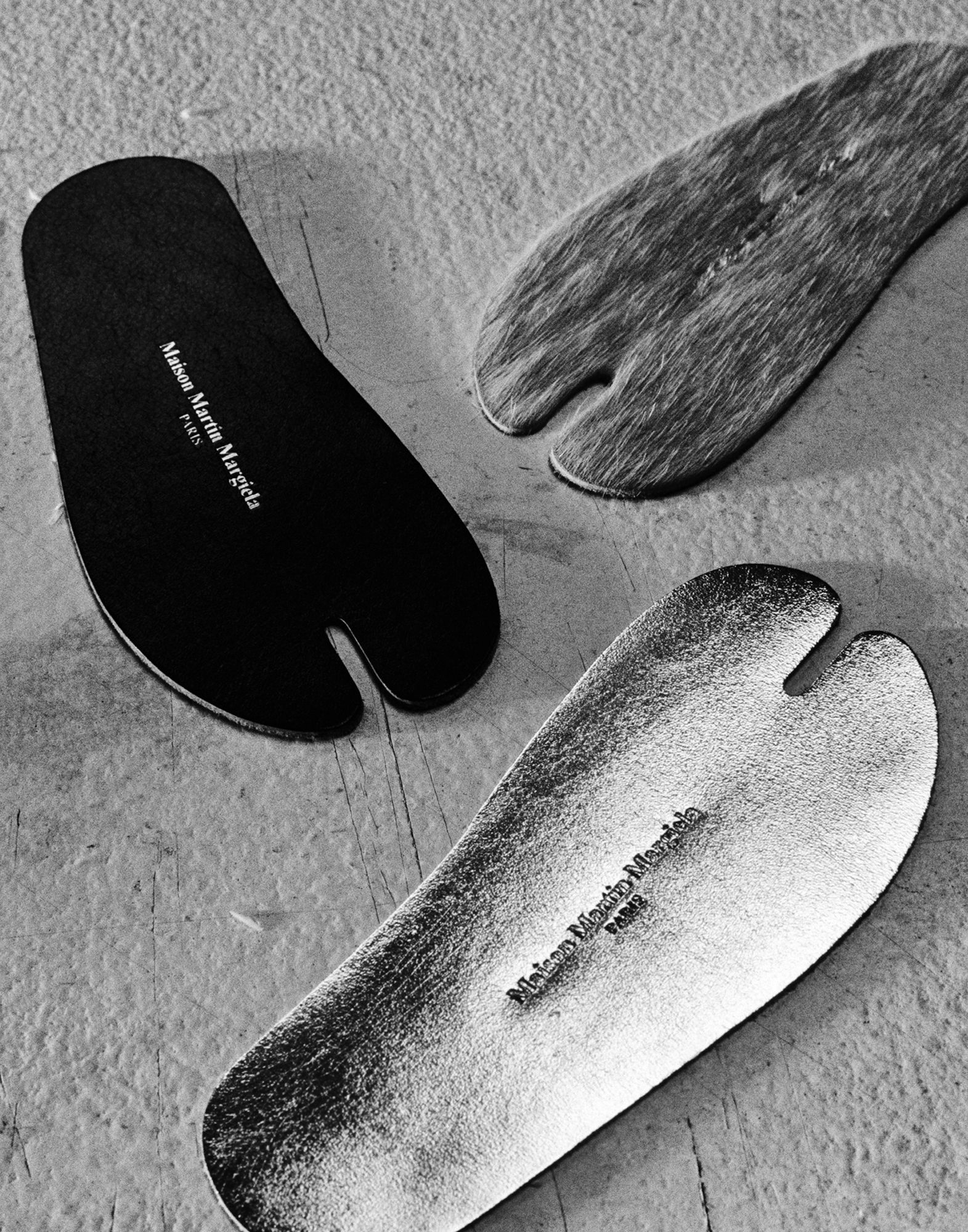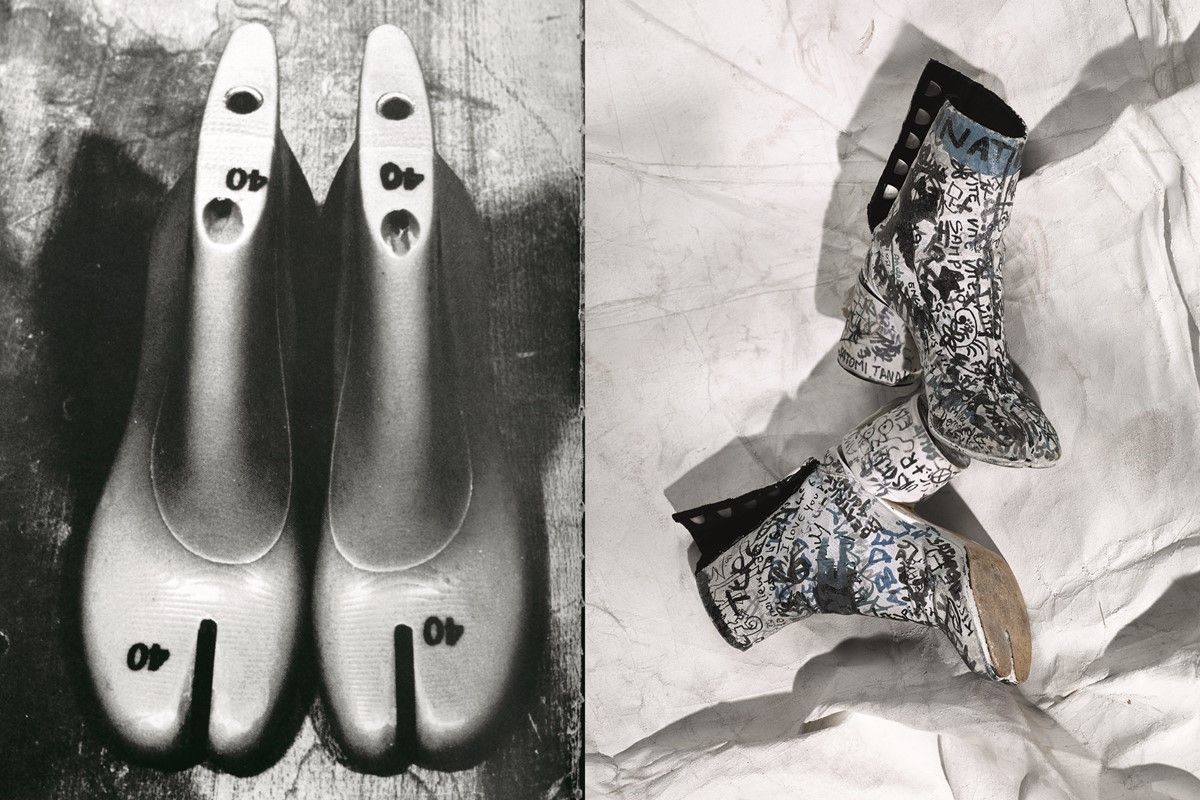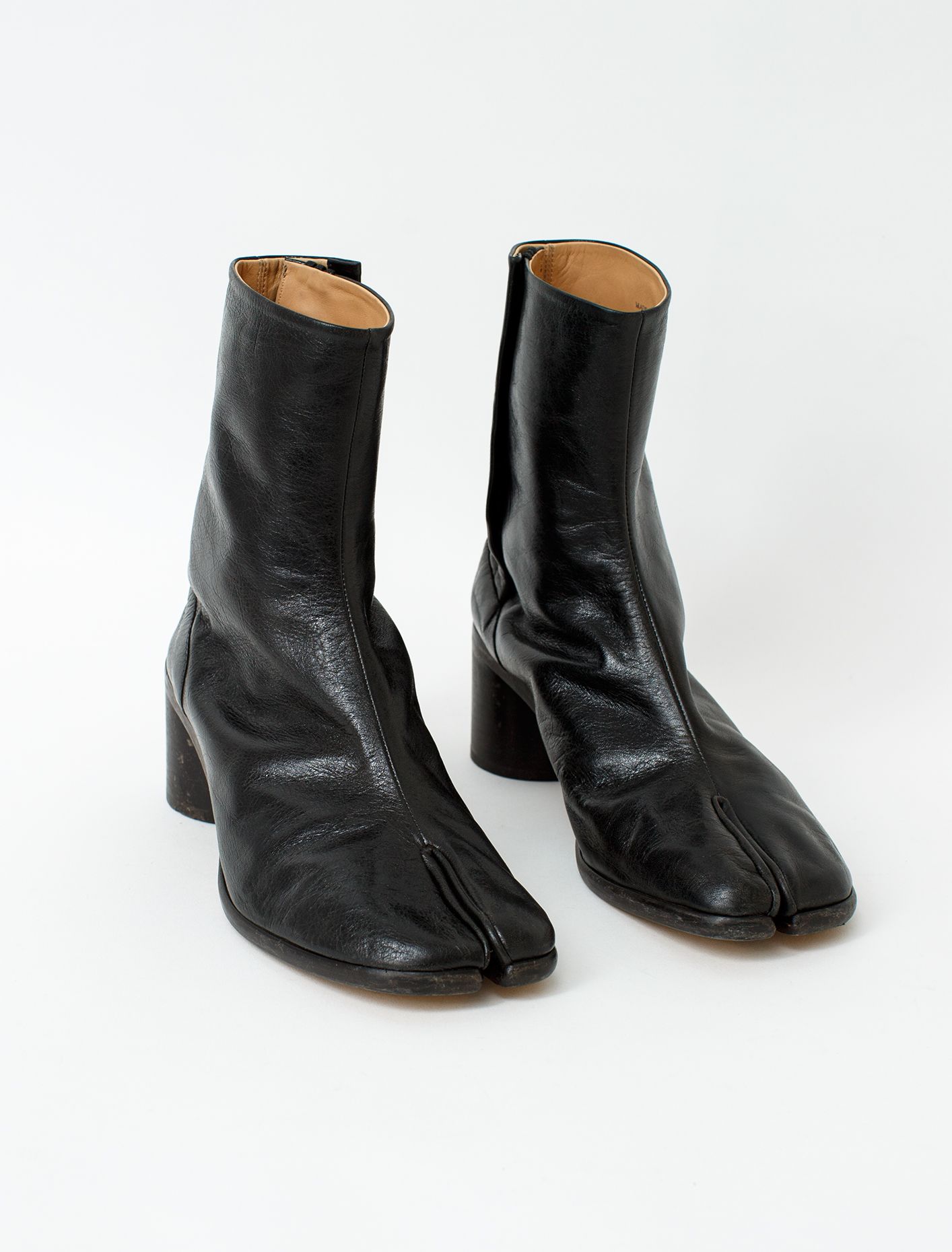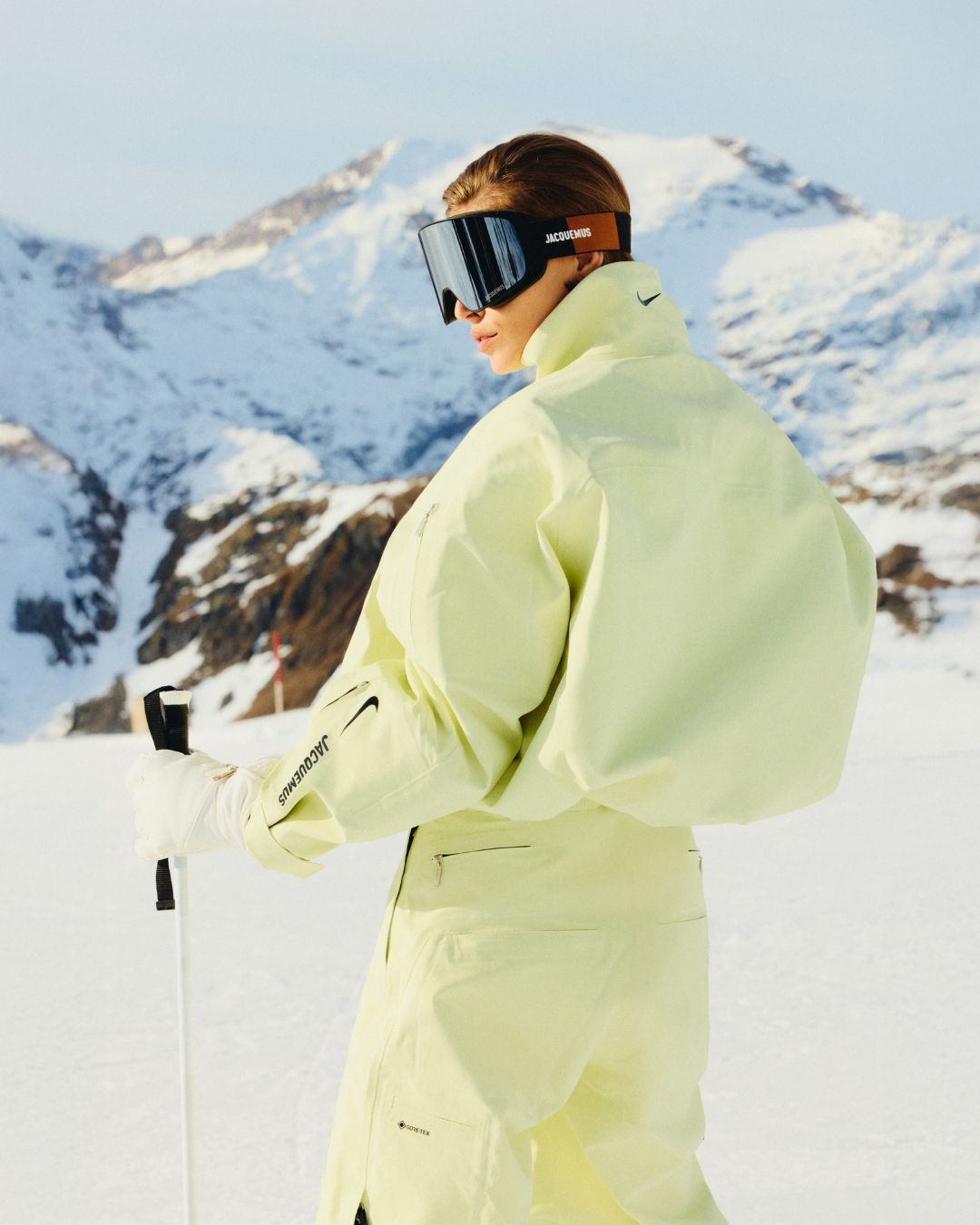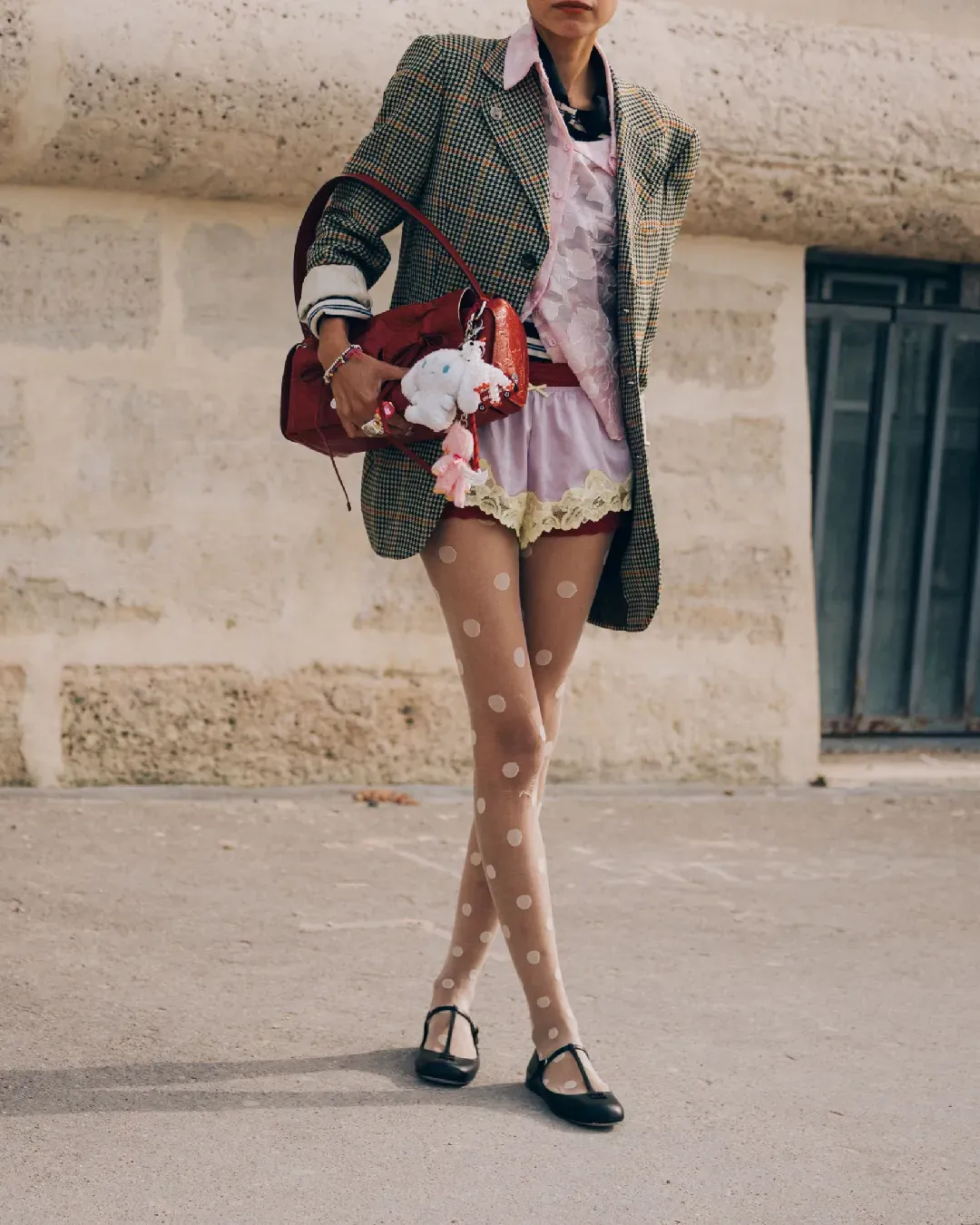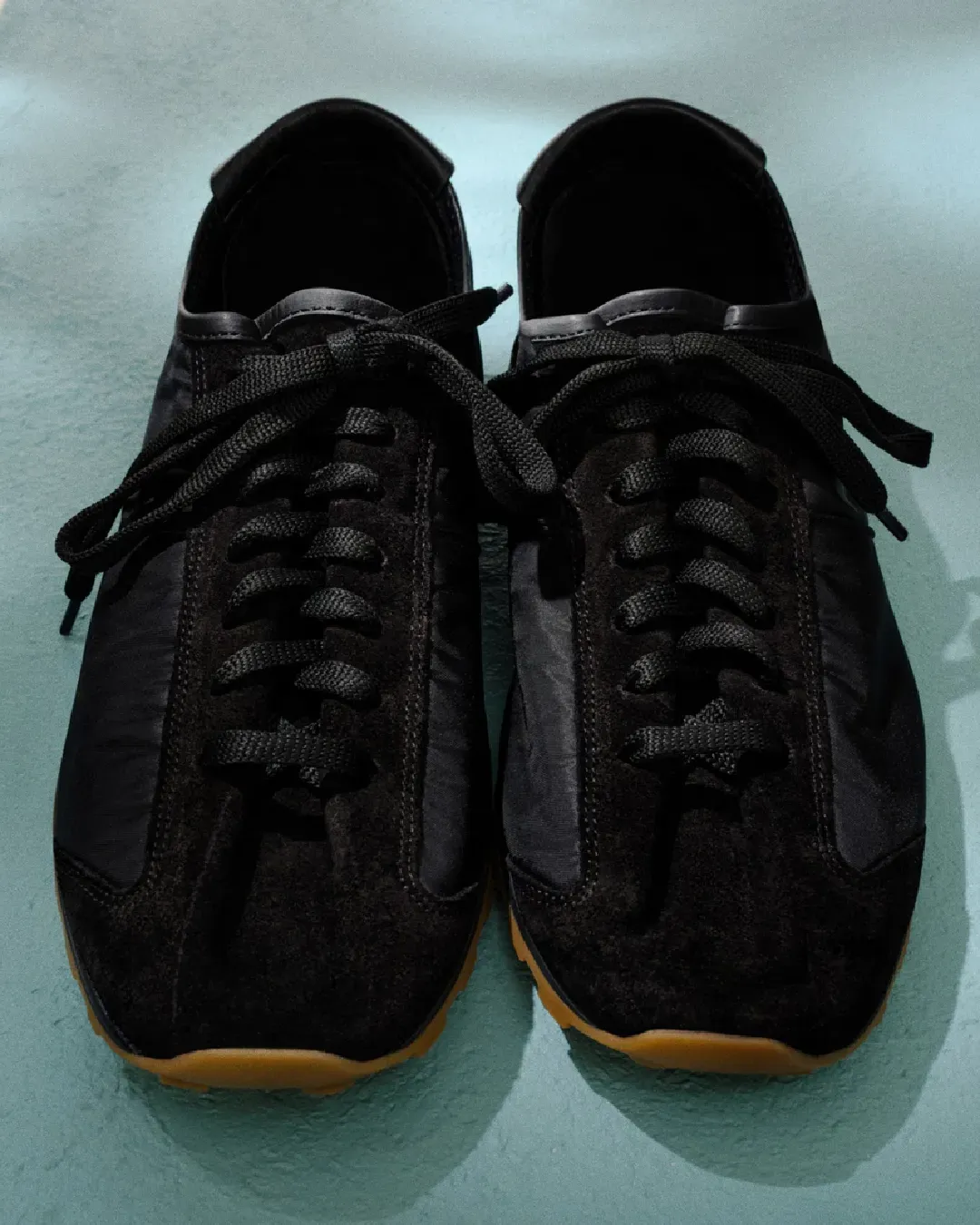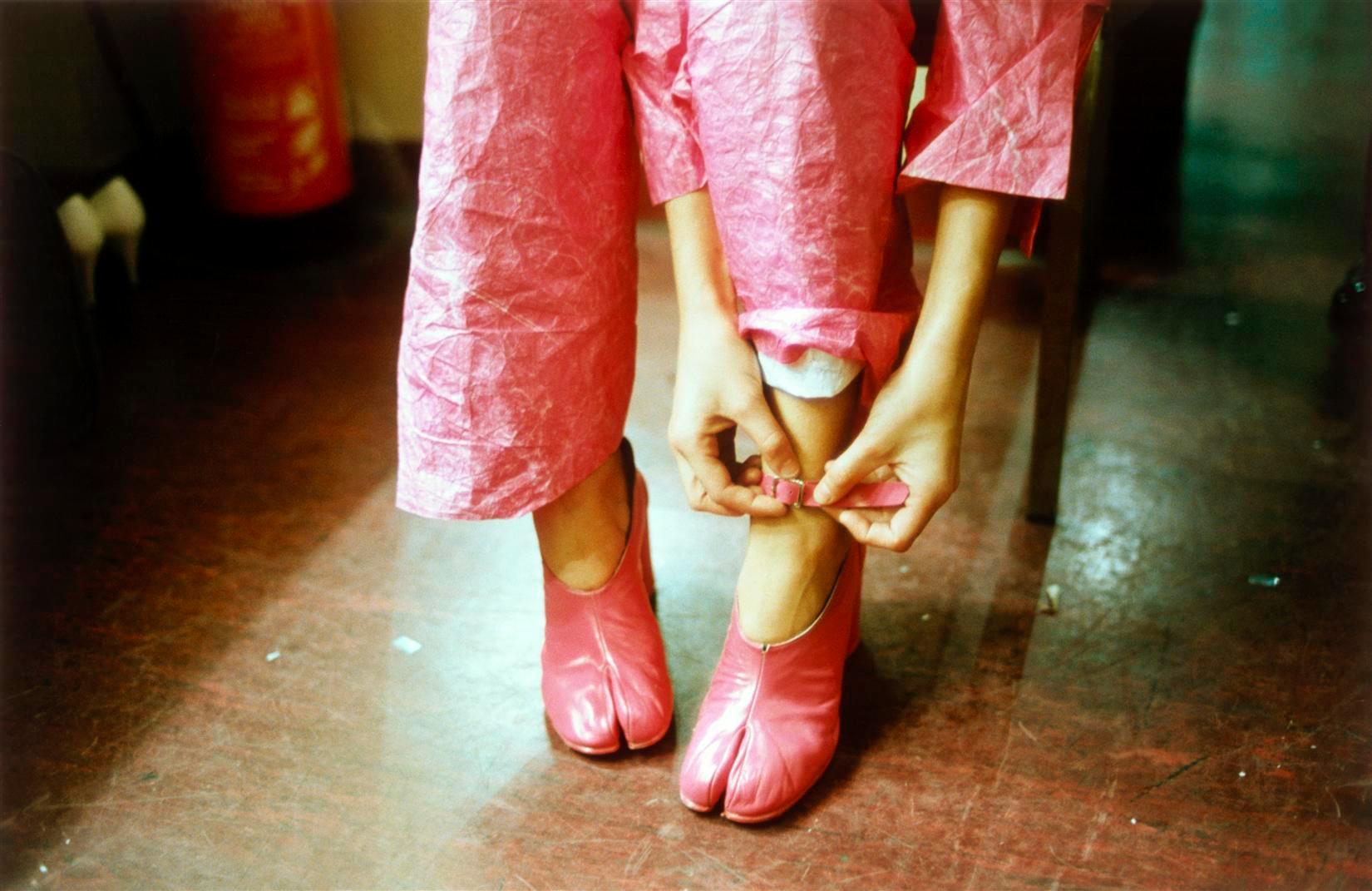
The admirable ugliness of the Tabi Boots Martin Margiela's accessory keeps generating mixed feelings and opinions 32 years after its debut
A few days ago, on the catwalk of the Paris Haute Couture, during the Maison Margiela Artisanal show, a new pair of hybrid sneakers made its debut, a silhouette born from the blending of the Reebok Instapump and another legendary silhouette, those Tabi Boots that have legitimized the split toe in the fashion world. The one presented by John Galliano, current creative director of the brand, is a fresh and contemporary reworking that reminds us of the importance and the influence of an accessory, and even more of a detail, that split between the big toes and the other toes that keeps arousing contrasting and divisive opinions, without ever losing its prominent role on and off the runways.
The History of Margiela's Tabi
Everything that concerns Martin Margiela is surrounded by an aura of mystery and of sacrality. The 1988 show that marked the debut of the Belgian designer, as well as of the Tabi Boots, takes us back to an era when fashion shows were real art performances. Margiela's models walked wearing the Tabi Boots dipped in red paint, in order to leave their footprints on a piece of cloth that would later be turned in a vest for the next collection. Since the beginning, the accessory that went on to define the future and the success of the Belgian designer is divisive, generating in the audience and in the press mixed feelings and opinions. A few years later, right after the legendary show held in an abandoned Paris metro station, Natalia Aspesi wrote on La Repubblica about Margiela's style calling it 'admirable ugliness'. These two words alone could sum up Margiela's success and Tabi Boots' legacy. There's nothing that catches the eye like an unexpected detail, an accessory you've never seen before, maybe ugly, but definitely appealing.
Tabi's success did not happen overnight. Lacking enough budget to manufacture other shoes, Margiela used to paint over the unsold Tabi Boots from the previous season to show them in the next collection. The first to sense and trust Margiela's vision and his creations was Geert Brullot, the manager of the first store to ever put on sale the Tabi, in Antwerp. Over the course of the years, the Tabi managed to enter in the collective imagination, turning into the most buzzed, discussed and sought-after item of the fashion industry, consecrating Margiela to the history of the industry and not only.
I wanted to create an ‘invisible’ shoe, the illusion of a bare foot walking on a high, chunky heel. The Tabi boot is the most important footprint of my career. It’s recognizable, it still goes on after 25 years, and it has never been copied.
What is the inspiration behind the Tabis?
The main inspiration for the Tabi was the eponymous Japanese socks, dating back to the XV century when Japan started to import cotton from China. The structure and the shape of the socks arise from a simple and practical need, that's to say being able to wear them with the traditional Japanese shoes. Very soon these socks, and especially their colour, turn into the symbol of belonging to a specific social class: peasants would wear them in blue on a daily basis and in white for special occasions. Samurai could pick any shade except for the purple and gold, which were reserved for the aristocracy. Thanks to their specific structure and the exploitation of three different pieces of cloths, the socks made their natural evolution, turning into real shoes by the introduction of a rubber sole. Tabi turned into Jika-Tabi which means "contact with the ground". The first to manufacture this type of shoe is Tokujirō Ishibashi, brother of the founder of the well-known Bridgestone, a company that knows a thing or two about rubber. These shoes started spreading immediately, becoming the go-to shoe for workers, farmers, who considered the split toe comfortable and suited for their movements. Such a recognizable shape had its downsides too: thanks to the footprints left by the Japanese soldiers, in fact, the Australian army was able to trace down and locate them during WWII.
The Tabi shoes from sportswear to high fashion
The rest of the world discovers the Tabi during the 1951 Boston Marathon, won by Shigeki Tanaka wearing a pair of Tabu by Onitsuka, better known as ASICS. It's thus wrong to assume that when we speak about Tabi we speak only about Margiela, as are many the brands which have worked and gave their version of this particular silhouette. The impact on the Western world wasn't one of the best. Especially in the US, Tabi was seen suspiciously and at times with disgust.
We'll have to wait until 1996 before Nike first introduced the split toe in one of its creations, the now incredibly sought-after and collectable Nike Air Rift. In this case, the Beaverton sportswear giant decided to dedicate the silhouette to Kenya runners, making different versions of the shoe in the colours of the flag of the African country. But in this case, as well, the reception was cold, to the point to Nike was forced to wait until 2014 before introducing once again this silhouette, helped moreover by the spreading of the Health Goth, the trend that conceives a sportswear mainly in the shades of black and with a goth inspiration behind it.
Prada brought on the catwalk its interpretation of the split toe in the SS13 collection, where the references to the Japanese traditions and clothes were multiple. Despite a number of attempts of copycats and knock-offs - the most famous one was pulled off by Demna Gvasalia, who actually worked at Margiela, in the Vetements FW18 collection, Tabi Boots' split toe has remained iconic and pretty much matchless. Over the last few years, Tabi Boots were the main inspiration also for sportswear brands, like Suicoke, maharishi, Abasi Rosborough or ISLMY.
Since their debut in 1988 Tabi Boots have continued to be an important and essential element of every Margiela collection, reworked every season in a number of different versions, ranging from boots, sneakers, ballerinas, platforms, varying in colours and materials. Among these stand out the Topless Tabi of the SS96 collection: minimalism reaches its highest point thanks to the plain sole paired with tape, to manually create the strap that wraps on the ankle to connect the foot to the shoe.
Although the original Japanese Tabis have always been unisex, it wasn't until 2017 that Margiela came out with the first men's Tabi Boots. Such a lacking has never damaged the fame and the iconicity of the boots, that have become real status symbols, signs of belonging to a specific social group, definitely artistic, against the tide, which follows fashion but with its own rules, creative, proud, queer. What embraces Margiela and its vision is a real community that expresses and gathers mainly on Instagram, where there are entire accounts dedicated to the archive and the creations of the Belgian designer, like @margielatab1 or @margiela.archive.
Belonging to that community is definitely Solange, who at the Tonight Show With Jimmy Fallon performed a mind-blowing set in a Dion Leen dress and black leather Tabi Boots, bringing on national television the most discussed accessory of the last thirty years, unveiling an unprecedented parallelism between herself and those shoes, long part of a niche ready to be appreciated and celebrated on a higher level, starting from a niche and becoming mainstream, opening to the wide audience without betraying their true essence.
As it happened with the Balenciaga Triple S or more recently with the Vibram FiveFingers, the fashion world loves and lives for controversial and disputed creations that challenge the limits of beauty and above all of the ugliness, because that's what sparks a conversation, a debate, sometimes a fight. Everything that avoids boredom and banality is welcome, even more, if it's ugly because ugly is attractive, ugly is exciting, maybe cause it's newer, as Miuccia Prada once said.










































